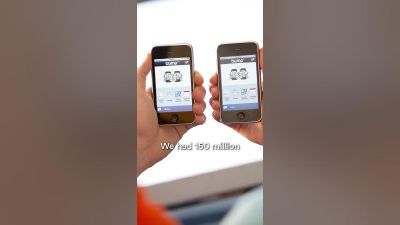From Bump to Google Photos: The Journey of David Lieb and His Team
In a challenging period for David Lieb and his team, they faced the reality of their popular app, Bump, potentially failing. With 150 million users, the pressure was on. They sought advice from Paul Graham, which led to a pivotal shift in their approach. This article explores their journey from a struggling photo-sharing app to the foundation of Google Photos.
Key Takeaways #
- Bump was a hit but faced inevitable failure.
- Advice from Paul Graham changed their direction.
- They aimed to replace the iPhone’s photos app.
- The team had limited time and resources.
The Pressure of Success #
When Bump was at its peak, it was the most popular app in the world. But behind the scenes, David and his team knew the truth: it was on the brink of failure. They had a massive user base, but the app’s future looked bleak.
They were running out of money, and the stress was palpable. David described this time as one of the most challenging periods of his life. The team needed a plan to keep their project from crashing.
Seeking Guidance #
In their search for solutions, they turned to Paul Graham, a well-known figure in the tech world. They laid out their situation, explaining their struggles with Bump and their new photo-sharing app, Flock. Paul listened and then pushed them to think bigger.
He suggested something radical: replace the entire photos app on the iPhone. At first, this idea seemed outrageous. How could they possibly take on such a giant task? But as they thought it over, they realized something important. The existing photos app wasn’t that great.
A New Direction #
With this new perspective, the team decided to take the plunge. They would build a better photos app. They had about four to five months of runway left, which meant they had to move fast.
Here’s what they focused on:
- User Experience: They aimed to create a more intuitive and user-friendly interface.
- Features: They wanted to include features that users actually needed and wanted.
- Performance: Speed and efficiency were key to keeping users engaged.
Building the Product #
The team got to work. They brainstormed, designed, and developed their new app. They were determined to create something that would not only compete with the existing photos app but also surpass it.
As they worked, they faced challenges. Time was tight, and resources were limited. But they were fueled by the belief that they could create something special.
The Result #
What started as a desperate attempt to save their company turned into a groundbreaking product. Their new photos app eventually became the foundation for Google Photos. This journey taught them valuable lessons about resilience, innovation, and the importance of seeking advice from others.
Conclusion #
David Lieb and his team transformed a tough situation into a success story. They went from fearing failure to creating a product that millions of people use today. Their experience shows that sometimes, the best ideas come from thinking outside the box and being willing to take risks.
So, the next time you face a challenge, remember David’s story. You might just find a way to turn it into an opportunity.
